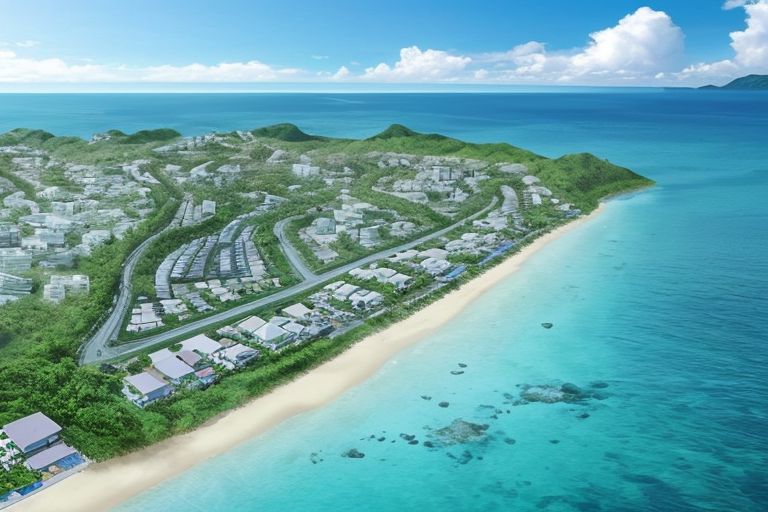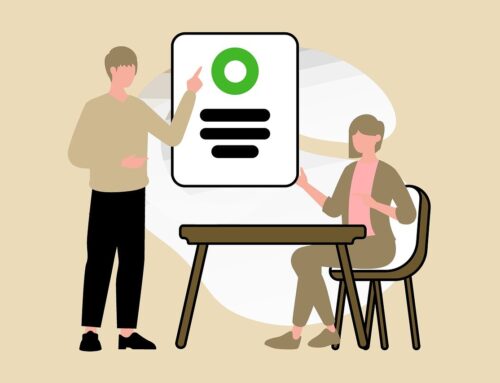
How Much Do Land & Lots Cost in the Philippines?
So you’ve got the dream — palm trees, turquoise water, and a little place to call your own. But before you get too deep into property listings, it helps to understand what drives land prices here. The Philippines isn’t one-size-fits-all. Prices shift big time depending on where you’re looking.From bustling cities to quiet islands, the cost of your future home depends on a mix of lifestyle, location, and how connected you want to be. Let’s break it down.
City Living Comes With Perks — And a Price
If you’re eyeing spots like Manila, Cebu, or Davao, be ready for higher land prices. These are the hubs — full of restaurants, hospitals, malls, airports, and fast internet. Everything’s within reach, and that convenience costs money.The upside? Property values in cities tend to go up over time. You’re close to jobs, social life, and pretty much anything you might need. But with all that comes traffic, noise, and a little more hustle than some folks want.
When the Energy of the City Works for You
City life isn’t for everyone — but for some, it’s exactly the vibe they’re looking for. If you’re here for career opportunities, networking, or a lifestyle that keeps things exciting, cities are where it’s at. There’s always something going on, and you’re never far from where the action is.
It’s great if you thrive on motion and being connected. But if you’re dreaming of quiet mornings and a big backyard, the city might feel a little too cramped or chaotic.
Out in the Countryside, Your Money Goes Way Further
Looking for space, quiet, and fresh air? Head outside the city limits and prices drop fast. In rural areas, you can get way more land for the same price as a small urban lot — sometimes even with views of rice fields, mountains, or quiet coastlines.
It’s not just about saving money, either. Rural land gives you room to build a garden, run a small farm, or even start a little eco-tourism venture if that’s your thing. It’s a different kind of freedom.
Slower Pace, Bigger Views — But Fewer Conveniences
The trade-off with rural land is access. You might be farther from big hospitals, international schools, or fast food. Roads might be rougher. Cell signal might be spotty. But for a lot of people, that’s part of the charm.
If you’re not tied to a city job or you’re okay with slower days and simpler living, the countryside might be a perfect fit especially if you’re planning for retirement or a low-stress lifestyle.
Your Ideal Spot Depends on What You Want Long-Term
It really comes down to what you want out of your life here. Are you building a peaceful escape or launching a business? Do you want neighbors and nightlife or quiet mornings and garden space?Start by looking at your priorities — budget, lifestyle, and what kind of daily life you picture. Once you’ve got that sorted, it’s way easier to find a spot that ticks all the right boxes.
Convenience Adds Up — Why Access Costs More
The easier it is to get to your land, the more you’ll probably pay. Lots with direct road access, close to highways or airports, tend to be more expensive and for good reason. It saves time, it’s more practical for deliveries or guests, and it’s just easier overall.
But if you don’t mind being off the beaten path, going a little remote can save you a lot. It all depends on how often you plan to go back and forth, and how much daily convenience matters to you.
Flat Land Is Easier to Build On So It’ll Cost You
The shape and layout of your land makes a big difference. Bigger lots naturally cost more, but so does flat land that’s easy to build on. If you’re looking at hills, cliffs, or uneven terrain, it might be cheaper upfront but you’ll likely spend more getting it construction-ready.
Think about what you plan to build. A hillside with a view sounds nice, but if it means major excavation or foundation work, those costs add up fast.
What It’s Zoned For Can Change Everything
Land that’s zoned for residential or commercial use is usually more expensive than agricultural land even if they’re in the same area. That’s because it has more income potential down the line. Whether it’s building a rental property or opening a small business, zoning gives you options.
If you’re just planning to live off-grid or grow your own food, agri land might be all you need. But if you’ve got business or development goals in mind, check that zoning early so you’re not stuck with something you can’t use the way you want.
Nearby Perks Drive Up the Price
Want to live steps from the beach or a short walk from a golf course? That view or convenience comes with a higher price. The closer you are to popular attractions or key lifestyle amenities, the more you’ll pay even if the land itself is small.
If you’re okay with being a short drive away instead of right next door, you can find some great deals just outside high-demand zones. Ask yourself what you really need close by and what’s worth giving up to stay within budget.
Legal Stuff Can Make or Break the Deal
Even if the land looks perfect, never skip the paperwork. You want a clear title, proper boundaries, and no ownership issues. If something feels off like missing documents or multiple claimants walk away. It’s not worth the risk.
Hire a lawyer who knows Philippine land law and let them review everything. A clean title might cost a bit more upfront, but it’ll save you way more in stress and money down the line.
Wait — Land Here Can Be Just as Pricey as the US?
It might surprise you, but land in some parts of the Philippines isn’t always the budget-friendly steal people imagine. Sure, the cost of living overall is lower but in popular areas, land prices can go toe-to-toe with mid-range US property. And in some beachfront or city-center spots, they even pass it.
Why? Simple. There’s a lot of demand, not a ton of prime land available, and plenty of people — both locals and foreigners chasing the same dream.
What’s Driving Prices Up So High?
First, tourism and population growth have boosted demand for land across the board. Then you’ve got infrastructure airports, expressways, business parks going up all over the country. Wherever development happens, prices follow.
Add in a strong cultural preference for land ownership, and you’ve got locals snapping up property for investment or family use. All that combined drives prices up, especially in hot zones like Boracay, Baguio, Siargao, or central Cebu.
Where Prices Get Shockingly High
Want a beachfront lot in El Nido? Or a patch of land near a luxury golf course in Batangas? Be ready to pay. Prime coastal spots have skyrocketed, sometimes hitting prices that feel closer to Southern California than Southeast Asia.
Same with business districts. Central Manila and Cebu’s top commercial zones often rival international real estate in cost but they’re still seen as smart long-term plays thanks to strong development momentum and growing demand.
Price per Square Meter Is the Metric You’ll See Everywhere
In the Philippines, land is usually priced per square meter (sqm), not as a total lump sum. So you’ll see listings that say something like ₱3,500 per sqm and you’ll need to multiply that by the lot size to get the full price.
Seems simple, but here’s the thing that number can range wildly depending on where you’re looking.
It’s a Huge Range From Cheap to “Wait, What?”
In rural provinces with basic infrastructure, you might see prices as low as ₱500 per sqm. But go to a tourist-heavy area or city center and that could jump to ₱10,000, ₱15,000, or more. Same country, completely different price reality.
That’s why “how much does land cost in the Philippines?” doesn’t have a one-size-fits-all answer. It depends on what kind of land, where it is, and what surrounds it.
What Pushes the Price Up (or Keeps It Low)
Here’s a quick recap of the big things that move the price per sqm:
-
Prime location like beaches or city hubs
-
Easy road access or nearby airports
-
Flat, buildable land
-
Proximity to malls, resorts, or major attractions
-
Commercial or residential zoning
Start with your priorities and budget, then use the price per sqm to compare options fairly.
Where to Actually Start Looking
When you’re ready to dig into listings, start with the big platforms:
-
Lamudi – Tons of filters and lots of listings
-
Dot Property PH – Clean interface and nationwide options
-
ZipMatch – Great for comparing house and land listings together
These sites are your first stop to see what’s available and get a feel for prices in your target area.
Dont Skip the Local Angle
Also check out government resources. The Land Bank of the Philippines sometimes lists foreclosed properties or land for sale. Local government websites can give zoning info or updates on planned infrastructure that could affect prices.
If you’re serious about a specific location, a local agent can be a game-changer especially for off-market listings or lots that aren’t online.
A Few Smart Tips Before You Buy
-
Join expat groups or local forums – tons of good advice from people who’ve already bought land
-
Negotiate — respectfully. Haggling is expected, but know the going rates and make fair offers
-
Always get a lawyer. Seriously. A real estate lawyer can check titles, contracts, and protect you from sketchy deals
Buying land takes patience and planning. But with the right info and a little hustle, it can turn into one of the best decisions you’ll make out here.

















